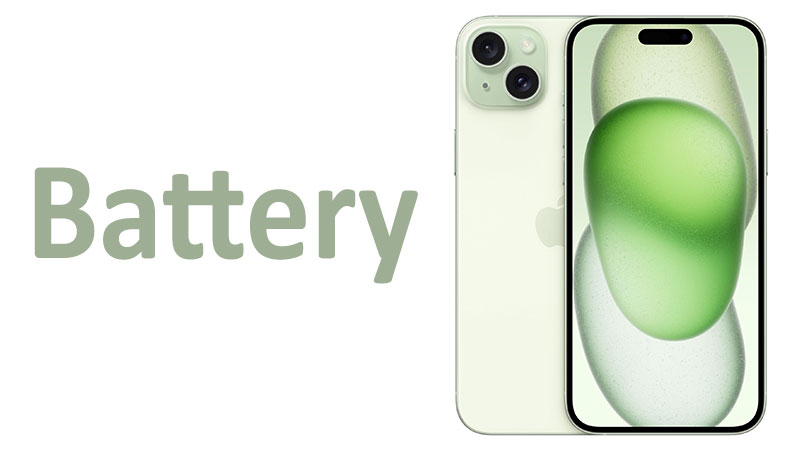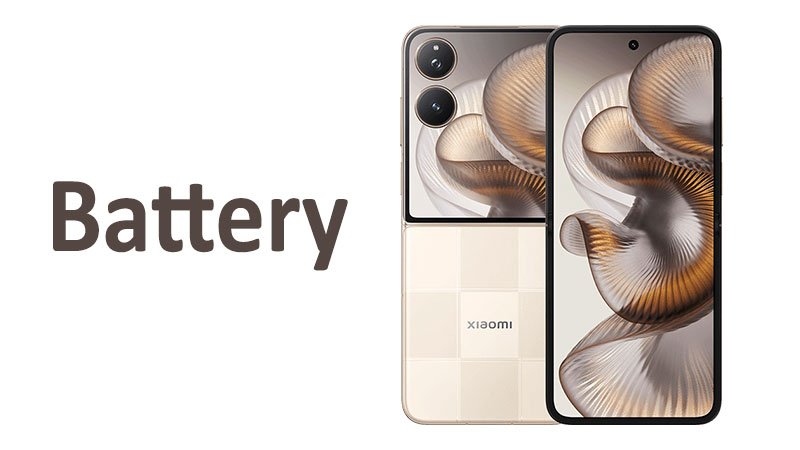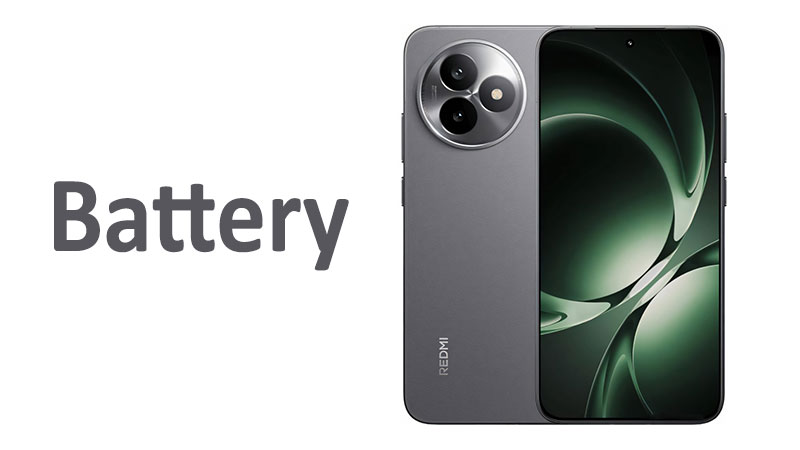The Apple iPhone 15 Plus battery stands out as a critical feature for many consumers. Its performance defines the overall user experience. Battery life and charging speed are often deciding factors when buying a new phone. This comprehensive guide explores every aspect of the iPhone 15 Plus power system. We will detail its capacity, analyze its longevity, and examine its charging capabilities. We will also provide essential information for potential buyers. Understanding the battery system helps you maximize your device’s potential.
Unpacking the Apple iPhone 15 Plus Battery Capacity
The physical size of the battery determines its capacity. Capacity dictates how long a phone can operate. The Apple iPhone 15 Plus uses a Li-Ion battery cell. This is standard technology in modern smartphones. Apple has continuously optimized this cell for maximum efficiency.
Detailed Capacity Specifications
The Apple iPhone 15 Plus battery has a precise capacity of 4383 mAh. The term mAh stands for milliampere-hours. It is the standard unit for measuring battery energy storage. This figure represents a slight increase compared to its predecessor. Apple prioritizes energy management alongside raw capacity. The combination of hardware and software is key to achieving excellent endurance. This large capacity is central to the phone’s reputation for long battery life.
Specialized Comparison: iPhone 15 Plus vs. iPhone 14 Plus
The iPhone 14 Plus already offered impressive battery longevity. However, the iPhone 15 Plus battery capacity sees a minor internal boost. The biggest improvement comes from system-level optimization. The new A16 Bionic chip manages power consumption better.
The physical capacity change is incremental. For instance, the iPhone 14 Plus held 4325 mAh. The iPhone 15 Plus steps up to 4383 mAh. This small difference contributes to overall improved endurance. Buyers seeking the very best iPhone battery life often choose the Plus model. It consistently outperforms the standard iPhone and the Pro models in pure longevity tests. This larger form factor allows for the substantial 4383 mAh cell.
Capacity and Power Efficiency
Raw capacity is only half the story. The A16 Bionic chip dramatically improves the energy efficiency. It features two high-performance cores and four high-efficiency cores. The efficiency cores handle most daily background tasks. They consume very little power. This intelligent power distribution is a major advantage. It ensures the 4383 mAh capacity lasts throughout a busy day. Modern battery performance relies heavily on this chip-level optimization.
For the average user, this means less time connected to a charger. It translates to more hours of streaming and browsing. The iPhone 15 Plus battery life benefits directly from these micro-efficiencies. Apple’s integrated design ensures all components work together seamlessly.
Endurance Champion: Real-World iPhone 15 Plus Battery Life
The real measure of any battery is its real-world performance. The iPhone 15 Plus battery excels in endurance testing. It is consistently praised for its ability to last well over a full day. This makes it a popular choice for power users. People who travel frequently also appreciate this feature.
Apple’s Estimated Battery Life Figures
Apple provides specific estimates for media playback. These figures offer a measurable benchmark for battery performance. They showcase the incredible efficiency of the device.
The iPhone 15 Plus can deliver up to 26 hours of video playback. This is a very high number in the smartphone market. For comparison, the standard iPhone 15 offers 20 hours. This six-hour difference highlights the benefit of the Plus model’s 4383 mAh battery.
Audio playback is even more impressive. The phone can handle up to 100 hours of continuous audio. This extreme longevity is perfect for music lovers and podcast listeners. These numbers confirm the iPhone 15 Plus as a category leader.
How the A16 Bionic Chip Extends Battery Life
The A16 Bionic chip is not just about speed. It is a critical component for power management. Its specialized architecture reduces energy waste. The chip’s image signal processor (ISP) is one example. It processes photos and videos with high efficiency. This means less strain on the iPhone 15 Plus battery during intensive camera use.
Furthermore, the chip manages the display refresh rate dynamically. When static content is displayed, the phone saves energy. When high-speed graphics are needed, it uses more power. This intelligent management system ensures power is only used when necessary. The A16 Bionic directly contributes to the superb iPhone 15 Plus battery life.
Specialized Comparison: iPhone 15 Plus vs. Android Competitors
It is helpful to compare the iPhone 15 Plus battery with key rivals. High-end Android phones, like the Samsung Galaxy S Ultra series, often feature large batteries. These devices can hold over 5000 mAh of capacity.
The iPhone 15 Plus, with its 4383 mAh capacity, often outlasts these larger rivals. This result is due to Apple’s superior software integration. iOS is highly optimized for power consumption. Android phones have more background processes running. This efficiency gap allows Apple to achieve better life with a smaller cell.
For example, independent testing shows the iPhone 15 Plus performing exceptionally well. It frequently ranks at the top of battery life charts. It competes easily against phones with technically larger batteries. This endurance is a major selling point for the iPhone 15 Plus charging and power system.
Comprehensive Guide to iPhone 15 Plus Charging
A powerful battery needs a versatile charging solution. The iPhone 15 Plus charging capabilities are significantly upgraded. Apple introduced USB-C and broader wireless standards. This transition offers greater convenience and faster charging times.
Wired Charging Speed and USB-C Integration (H3)
The biggest charging change is the move to USB-C. This universal port replaces the proprietary Lightning connector. It brings new versatility for connecting accessories. It also simplifies the charging experience for users. The iPhone 15 Plus uses the USB-C port for its wired charging.
The iPhone 15 Plus supports Power Delivery 2.0 (PD2.0) fast charging. This technology allows the phone to accept higher wattage. Specifically, it can charge up to 50% capacity in approximately 30 minutes. This is a crucial speed for users on the go. Achieving this speed requires a compatible USB-C power adapter. Apple recommends a 20W or higher charger.
Fast charging works by increasing the power flow in the initial stages. The phone’s charging rate slows down significantly past the 80% mark. This process protects the battery from overheating and degradation. The half-hour fast charge time is a major convenience for busy lifestyles.
MagSafe and Qi2 Wireless Charging (H3)
Wireless charging offers a convenient cable-free experience. The iPhone 15 Plus supports two main types of high-speed wireless charging.
First, it supports 15W MagSafe wireless charging. MagSafe uses a ring of magnets to perfectly align the phone with the charger. This ensures maximum efficiency and speed. The 15W delivery rate is double the old standard Qi charging speed. MagSafe remains the most reliable wireless option for Apple devices.
Second, the iPhone 15 Plus includes 15W wireless (Qi2) support. Qi2 is the next-generation wireless charging standard. It incorporates the Magnetic Power Profile used by MagSafe. This means Qi2 chargers also align magnetically. The key difference is that Qi2 is an open standard. This will lead to more affordable and widely available 15W chargers.
The Qi2 feature requires a specific software update. Users must install the iOS 17.2 update or later to unlock 15W Qi2 speeds. Prior to this update, Qi2 chargers operate at the slower 7.5W standard. The adoption of Qi2 demonstrates Apple’s commitment to open standards. It is a big win for consumers.
Reverse Wired Charging (H3)
The iPhone 15 Plus introduces a minor but useful capability. It offers 4.5W reverse wired charging. This means the phone can share its power with other small devices. It functions like a temporary, tiny power bank.
Users can connect accessories to the iPhone 15 Plus USB-C port. Small devices like AirPods or an Apple Watch will then draw power. The 4.5W output is relatively slow. It is designed only for topping up low-power accessories. It is not suitable for charging another smartphone quickly. This feature adds another layer of utility to the iPhone 15 Plus battery system.
Reverse charging is particularly helpful in emergencies. It can ensure your essential accessories stay operational. This small power-sharing capability is a new convenience enabled by the USB-C port.
Pros and Cons: Evaluating the iPhone 15 Plus Power System
The iPhone 15 Plus battery and charging system is highly advanced. However, like any technology, it has distinct advantages and minor drawbacks. Understanding these helps make an informed purchase decision.
Pros of the iPhone 15 Plus Battery and Charging
The power system offers several compelling benefits. These advantages place the iPhone 15 Plus among the industry leaders.
- Superior Battery Endurance: The 4383 mAh cell provides exceptional longevity. It easily lasts a full day of heavy use. This battery life is one of the phone’s greatest strengths.
- A16 Bionic Efficiency: The chip’s power management system is best-in-class. It ensures maximum usage time from the battery capacity. This efficiency is critical for long-term performance.
- USB-C Port Convenience: The adoption of USB-C simplifies connectivity. It allows users to use one cable for many different devices. This is a major improvement for many Apple users.
- 15W Qi2 Support: Supporting the open 15W Qi2 standard is forward-looking. It guarantees access to a wider ecosystem of fast, magnetic wireless chargers. This future-proofs the phone’s wireless charging.
- Reliable Fast Charging: The ability to reach 50% charge in 30 minutes is highly practical. It minimizes downtime when you need a quick power boost. The PD2.0 support is stable and widely compatible.
Cons of the iPhone 15 Plus Power System
Despite the many upgrades, a few areas lag behind some competitors. Buyers should be aware of these limitations.
- Wired Charging Speed Limit: While 50% in 30 minutes is fast, some Android rivals charge faster. They offer 65W or 120W charging speeds. The iPhone 15 Plus does not support ultra-high-wattage charging.
- Charger Not Included: Apple does not include a power adapter in the box. Consumers must purchase a separate 20W or higher power adapter to use fast charging. This adds to the initial cost.
- Slow Reverse Charging: The 4.5W reverse wired charging is very limited. It is only useful for extremely small accessories. It cannot effectively help charge another smartphone.
- iOS 17.2 Requirement for Qi2: Users need to update their operating system for full 15W Qi2 support. This means new buyers must immediately perform a software update. Otherwise, they will experience slower wireless charging speeds.
Essential Buyer Information and Longevity Tips
Buyers considering the iPhone 15 Plus need specific information. Knowing how to properly charge and maintain the device is essential. This section covers key points for purchase and long-term battery health.
Important Points a Buyer Should Know
First, acknowledge the charging port change. The USB-C port is new for iPhones. You will need a USB-C to USB-C cable for the fastest wired charging. Apple includes a cable in the box.
Second, a compatible power adapter is required for 50% in 30 minutes charging. The charger must support Power Delivery (PD) protocol. A standard, older 5W or 12W charger will charge the phone slowly. Invest in a certified 20W or higher PD charger for optimal speeds.
Third, remember the 15W Qi2 limitation. If you buy a new Qi2 charger, ensure your phone runs iOS 17.2 or later. Otherwise, you are wasting the charger’s full potential. The software update is necessary to enable the full speed.
Finally, the iPhone 15 Plus battery capacity makes it the battery life champion. If your priority is endurance over a full day, this is the best model. It consistently beats the standard and Pro variants in longevity tests. This factor is crucial for heavy users.
Maximizing iPhone 15 Plus Battery Health
Maintaining good battery health is vital for the phone’s lifespan. Batteries naturally degrade over time. However, smart usage habits can slow this process significantly. Apple provides software tools to help manage this.
Use optimized battery charging. This feature learns your daily charging routine. It only charges the battery past 80% just before you need it. This reduces the time the battery spends at full capacity. Spending prolonged time at 100% can strain the cell.
Avoid extreme temperatures. Heat is the greatest enemy of the Li-Ion battery. Do not charge your iPhone in direct sunlight or hot environments. Excessive heat degrades the 4383 mAh capacity faster. Always remove your phone from its case if it feels hot during charging.
Manage background activity. Limit the apps that constantly run in the background. This reduces unnecessary power drain from the A16 Bionic chip. Reviewing location services and push notifications also helps save power.
Keep iOS updated. Apple often includes battery optimization improvements in software updates. Installing the latest iOS version ensures you benefit from these efficiencies. For example, the iOS 17.2 update enables the full Qi2 speed.
Conclusion
The Apple iPhone 15 Plus battery system is a defining element of the device. Its 4383 mAh capacity, paired with the highly efficient A16 Bionic chip, delivers outstanding battery life. This phone is a true endurance champion in its class. It is the best choice for users who prioritize all-day power.
The charging story is equally compelling due to the adoption of USB-C. This change brings the convenience of fast wired charging to 50% in 30 minutes. Furthermore, the support for the open 15W Qi2 wireless standard is a significant future-proofing step. It simplifies the wireless charging ecosystem for everyone.
While some competitors offer faster peak wired charging, the iPhone 15 Plus prioritizes stability and longevity. The combination of remarkable battery life and versatile charging options makes it a compelling purchase. If you value continuous, reliable performance without constant searching for an outlet, the iPhone 15 Plus charging and power is the right fit. It confidently stands as one of the best batteries in the smartphone world today.
FAQ
Is the iPhone 15 Plus battery bigger than the standard iPhone 15?
Yes, the iPhone 15 Plus battery is significantly larger than the standard model. It has a 4383 mAh capacity. The standard iPhone 15 has a smaller cell due to its physical size.
How fast is the wired charging on the iPhone 15 Plus?
The iPhone 15 Plus supports PD2.0 fast charging. It can charge up to 50% capacity in about 30 minutes. You need a separate 20W or higher USB-C Power Delivery charger to achieve this speed.
Does the iPhone 15 Plus support Qi2 wireless charging?
Yes, the iPhone 15 Plus supports 15W wireless charging via the new Qi2 standard. You must update the phone to iOS 17.2 or later to enable the full 15W speed for Qi2 accessories.
What is the expected video playback time for the iPhone 15 Plus?
Apple officially rates the iPhone 15 Plus for up to 26 hours of video playback. This is an exceptional endurance figure. It highlights the phone’s long-lasting power.
Can I charge another device using the iPhone 15 Plus?
Yes, the iPhone 15 Plus features 4.5W reverse wired charging through the USB-C port. This allows it to slowly charge small accessories like AirPods or an Apple Watch.



